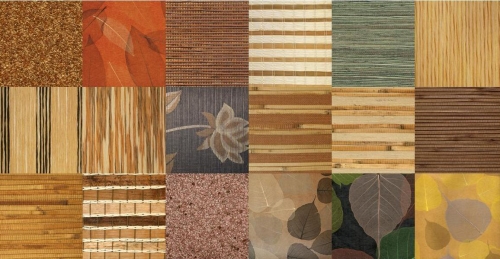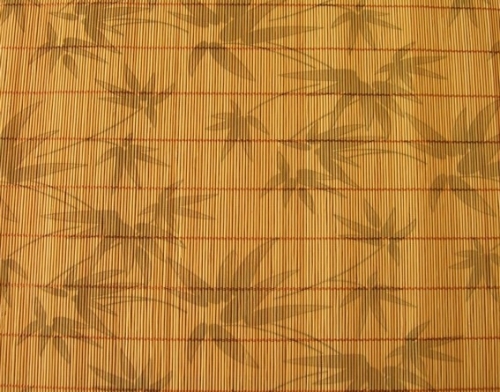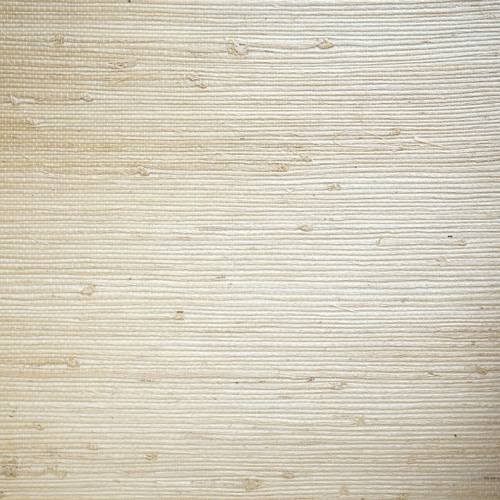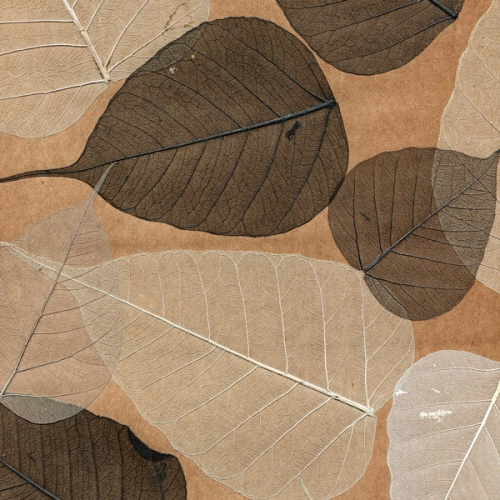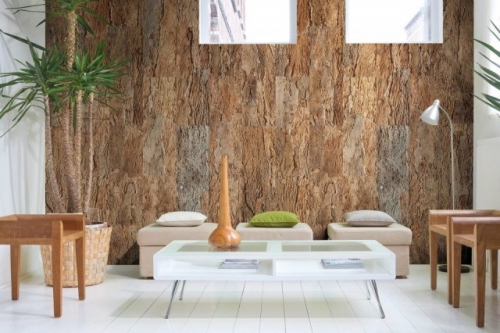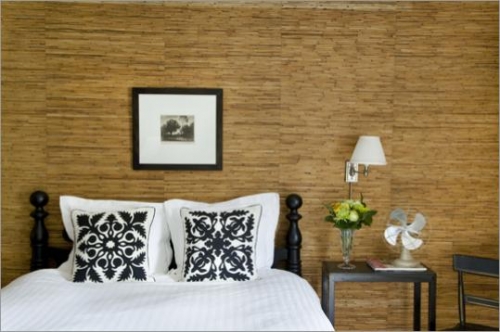Before discussing how to choose a substrate under the parquet floor, it is worth understanding ...
|
|
Since ancient times, man has tried to protect his housing as much as possible, installing ... |
The slopes on the doors are not only a warming element of door decoration, but also ... |
Natural wallpapers: features, advantages, use options

How often in construction stores you have to literally get lost against the background of endless racks with products. Nevertheless, this article will talk about a very pleasant choice, because pasting the walls with wallpaper, being the final stage, marks the end of the repair. Let's talk about choosing this material. But not about the usual paper or vinyl versions, but about the so -called natural coatings, and try to figure out what they are and whether the money indicated on the price tags cost.
Content:
- Natural wallpaper
- Making wallpaper from natural materials
- Bleing of natural wallpaper
- The main pros and cons of natural wallpaper
- How to care for natural wallpaper
Natural wallpaper
- Their second name is plant wallpaper. The basis for them is an unpleasant (which, therefore, is not subject to active and harmful processing) paper, canvas or non -woven of plant origin. The width of the piece most often starts from 60 cm and can reach 97 cm, and from 5.5 to 10 m of the material is usually placed in the roll. Some other parameters will be indicated in separately described material.
Natural wallpapers photo
- The environmentally friendly base is applied to this environmentally friendly, gluing, gluing the fibers of some plants. They can be used one by one, or combined with each other.
- Such a coating is suitable not only for walls, but also of ceilings, allowing you to create an original and very individual design in the room. The uniqueness is achieved due to the fact that, like any thing of natural origin, natural wallpapers cannot be duplicated to the smallest detail.
- Of course, they are not forbidden to use neither in retro, nor high-tech or immortal classics, however, more harmoniously natural wallpapers look in the interiors of a la country or rural glamor. Coatings proposed by nature itself do not have to glue over the entire area of \u200b\u200bthe room. Sometimes a simple insert or several elements of them is enough to emphasize zoning or make a certain emphasis, according to the design plan.
Making wallpaper from natural materials
So, for their production, natural components are used.
- Natural wallpaper from bamboo. This is an extremely popular material for the manufacture of environmentally friendly coatings on the walls. We can say that these are the first natural wallpaper from exotic components launched into serial production. Folk love for them is based on a unique sense of energy, they seem to give the room all the strength and warmth of the southern sun. Let us dwell on them a little more, since the appearance and manufacturing process is somewhat different from other types of natural wallpaper.
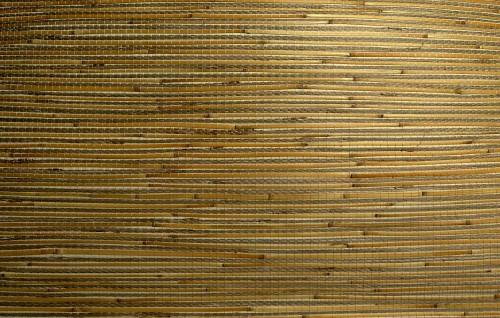
- Sometimes they are called bamboo canvases. Such a coating is a bar of plants selected in width and fixed with a fabric base glue. The width of the rails is diverse, from 0.3 to 1.7 cm. The width of the roll itself starts from 90 cm and reaches two meters.
- Several types of bamboo canvases are distinguished: from the outer bar. Since this outer part of the plant in the plant is the dense, wallpapers from it, in addition to its exoticism, are also valued for this quality; stitched bamboo wallpaper form fastened (by means of thread) strips with each other; grinded coatings. They are made from a less valuable part of the bamboo, after the upper part is removed from it. The rest is grinded and covered with varnish.
- Such natural wallpapers can be used on horizontal and on vertical bases, they often become the basis of the decor of objects in the interior. The first view from the outer bar can be used even with external decoration.
- In general, the bamboo canvas is very resistant to mechanical and atmospheric effects. It looks good on balconies and loggias, gives a special chic to the interior of a cafe or office room. Due to moisture resistance, it is used in the decoration of the premises in saunas and baths. Special bamboo strips serve to design joints or corners.
- Jute. Wallpapers from this material are created as follows: plant fibers (obtained from the annual plant of the linden family) are applied to sheets of natural unstable paper or non -woven. The resulting coating is very reminiscent of a textile canvas, in which intersperses are observed in the form of fragments of nodules.
- Some types of seaweed. Sellers assure that they even continue to exude the weak aroma of the sea elements and even saturate the air in the room ions of iodine iodine.
- Reeds.
- Papyrus.
- Cork. The wallpaper from the cork appeared as an alternative to the decor from this material on the walls, which is a plate of sections. The modern version of the coating is easy, and most importantly, hypoallergenicity. If any of the family members suffers from some forms of this disease, such wallpapers will be a good solution for his room.
- Wood veneer. Not so long ago, the wood veneer was used exclusively in the furniture industry. Progressive modern technologies make it possible to make magnificent plant coatings from it. The most diverse wood breeds go to their creation: Zebrano, European cherry, Japanese varnish tree, Italian sandalwood, Phoenix and many others. They are valued for a shade, a beautiful pattern formed by fibers and creating structurality and illusion of volume. Undoubtedly, such a wall covering can attract a look for a long time.
- Leaves. The basis is high -quality non -woven. And the outer side is created from skeletons and painted natural leaves. Most often, flora representatives as the Bodhi tree (sometimes called the Buddha tree), mango, ficus, magnolia, Chinese nettle are used.
- Sisal This rough fiber, obtained from agave leaves. It is rarely used independently and is more often part of combined types of eco wallpaper.
- Linen. Flaxhes are made by the so -called textile wallpaper. Using the lamination method, threads of completely natural or mixed fibers are applied to the paper base. The resulting coatings are very reminiscent of natural linen. In addition to environmental friendliness, they are resistant to burnout, they can also be used on ceilings, provide additional sound insulation in the room. The canvases are produced in rolls with a length of 10 to 50 meters, and their width is small from 53 to 80 cm.
- Velvet or silk, also serving as the basis for creating wallpaper, is also customary to attribute to natural types. They are distinguished by a certain degree of environmental friendliness, give the unique raid of chic and the royal gloss to the interior, but deserve a separate conversation rather. Like coatings made of cherished leather, again called natural.
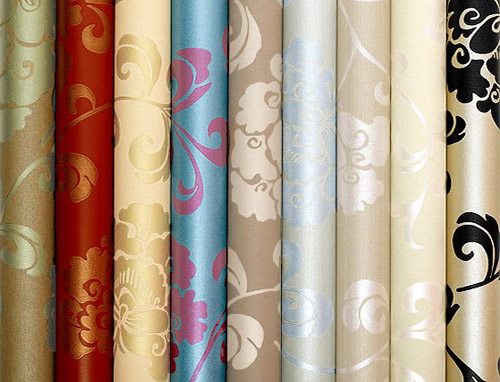
The design of natural wallpaper can imply combining several varieties:
- bamboo and jute;
- bamboo and sisal;
- maranta and bamboo;
- reed and gold;
- reed and bamboo;
- sisal and jute;
- reeds and grass.
A variety of combinations affect not only the service life or the overall quality of the wallpaper, but also on their structure and shade.
The raw materials used for the manufacture of such coatings are growing, gathering and undergoing primary processing in Southeast Asia, where local residents have very impressive experience in cultivating and further pre-production training of these plants, designed to subsequently become fibers for creating wallpaper.
The process of production of plant wallpapers
- Plants are carefully collected, washed and dried naturally under the influence of the sun and wind.
- Then they are selected in thickness and color.
- After that, the selected components are intertwined manually or on special machines.
- Of the stripes formed in this way, natural threads (mainly the same materials that went to the manufacture of a piece of wallpaper) are sewn canvases. They are glued on the basis.
- The coloring process also corresponds to the declared natural process. The glued base and the front side give the color with natural dyes. Thanks to the natural origin of the coloring pigments, the shades are as close as possible to natural green, golden, craft, brown yellow tones, very soothing and pleasant to the eyes.
Bleing of natural wallpaper
- Unlike other types of modern wall coatings, natural wallpaper can be used not in all rooms of the house. It is clear that for the bathroom and any room where increased humidity is formed, they will not work.
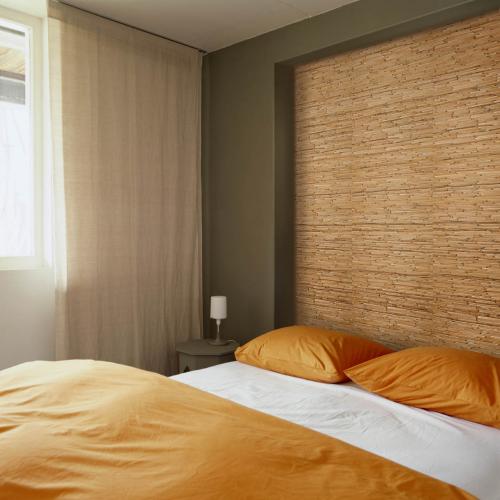
- This rule also applies to the kitchen. Even in the presence of a high -quality and powerful ventilation system, extraneous smells are very quickly absorbed by natural fibers, and they are not created for cleaning. Therefore, their habitat should be marked exclusively by residential premises with a stable microclimate: bedroom, living room, nursery (unless, of course, a child is an adult, so as not to draw on the wallpaper). The hallway is undesirable, but a possible option.
- Many designers use this material as a decorative and original finish for parts of furniture or interior items. It is worth recalling this if trimming remains in the process of gluing.
- If the question arises of how to glue natural wallpaper, then everything is simple here. The usual glue based on modified starch diluted a little thicker is perfect for them than the manufacturer recommends for heavy wallpaper.
The main pros and cons of natural wallpaper
To finally make an idea of \u200b\u200bsuch a type of material as natural wallpapers, you should know their strengths and weaknesses. Such information will help or make a final decision in favor of their application or refuse to buy.
So, the pluses:
- The first and main positive point is the use of environmentally friendly components. In our century, the dominance of artificial and non -natural materials many appreciate just such a proximity of the natural habitat.
- Unrivaled aesthetic qualities worthy of true connoisseurs of natural diversity and at the same time minimalism. This can be traced in each component of wallpaper from natural shades to a barely perceptible aroma of herbs and plants. They are beautiful, like everything created by nature.
- Contrary to the fears of many potential buyers, the colors are preserved and do not burn out for a very long time.
- They have (albeit low in terms of indicators) the ability to absorb noise. In addition, natural coatings are breathing, that is, they do not interfere with natural ventilation.
In order for the review to be honest, we also describe the disadvantages of such wallpaper, which are expressed as follows:
- fragility. Compared, for example, with vinyl brothers, natural examples are less durable. Only an extremely careful attitude and safety from humidity is able to extend the life.
- Environmentally friendly wallpapers, as already mentioned at the beginning of the article, are produced in rolls with a small width. Therefore, there are a large number of joints when pasting. True, designers offer this defect to beat. Such a drawback is simply proposed to skillfully mask, say:
- bamboo slats,
- strips from other natural materials,
- braid or lacing suitable for natural forms.
- The latter in our list (but far from value) is a negative point price. It is mainly that it causes refusal to acquire natural wallpaper. Yes, the cost of a roll starting at $ 25 is capable of cooling any ardor. But here it is worth recalling the production process. Manual labor is always valued high, but here it is painstaking and long work, plus the composition of the coating. And pricing already acquires a logical explanation. However, the decision in any case remains only for the consumer.
We make a reservation that some of the descriptions do not characterize all types of natural wallpapers, for example, the strong characteristics of bamboo coatings were said above.
How to care for natural wallpaper
- They do not require complicated care during operation. The dust is cleaned of a cloth from a soft flannel in the direction along the fibers, and then across. You can even accurately vacuum such wallpaper from time to time, only the power should be set the most minimal, and the nozzle is used to use ordinary (without additional brushes to remove wool).
Despite the shortcomings that any wall covering has, the use of natural wallpapers in the finish decoration of the premises is undoubtedly a fresh trend and an original solution. So if the task is to arrange bright and individual accents in decorating, then wallpaper from environmentally friendly materials will cope well with set goals.

